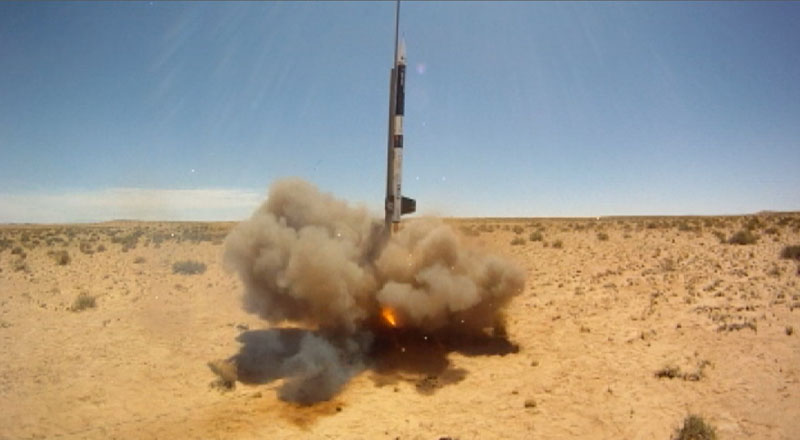Nouvelles
A first for Canada: A Polytechnique Montréal rocket shoots to first place in the IREC 2012, an international astronautics competition held in the Utah desert
The goal of the competition is to fire a rocket carrying a scientific payload to an altitude of precisely 10,000 feet. Zéphyr, Oronos Polytechnique's rocket, set a record for precision with an altitude of 9,920 feet, - a margin of error of less than 1%.
More than 300 points ahead of its closest rival
Seventeen teams from the United States, Brazil and Canada entered the 2012 competition. Only eleven managed to qualify. Oronos
Polytechnique ranked first, with a final score of 921 points out of 1,100 - 330 points ahead of its closest competitor, the
American team from Embry-Riddle Aeronautical University.
The IREC judges, all veterans of the aerospace field, evaluate the teams based on several criteria, including the rocket's technological sophistication, design, the team's professionalism, their security protocol, the precision of the altitude reached, and the rocket's post-flight condition. The Polytechnique Montréal delegation excelled in all categories.
A rocket with scientific reach
Zéphyr is 11 feet long, weighs 70 pounds, and took approximately 6,000 man-hours to design, test and build. After take-off, it
accelerated from zero to 1,000 km/h in 3.5 seconds. At the competition, the rocket was carrying a science experiment to study
the aerodynamic phenomena encountered when vehicles approach the speed of sound. It was also equipped with two smart avionics
subsystems entirely designed and built by the team's members. These subsystems recorded data on speed, altitude, direction and
GPS position, transmitting them in real time to a ground station. This functionality allowed the team to recover the rocket in
only two hours, despite its landing three kilometres from the launch site.
The competition took place in Green River, Utah, USA, from June 21 to 24, 2012. The results were only released a few days ago.
About Oronos Polytechnique
Oronos Polytechnique was founded in May 2010 and now includes 35 undergraduate students from five engineering disciplines. The
committee's objective is to design and innovate in the fields of aerospace and astronautics. Oronos gives students the
opportunity to apply theoretical concepts learned in class in a practical, competitive environment. The team now has eight
launches and six prototypes to its credit.
Photos and video on the Oronos site.






